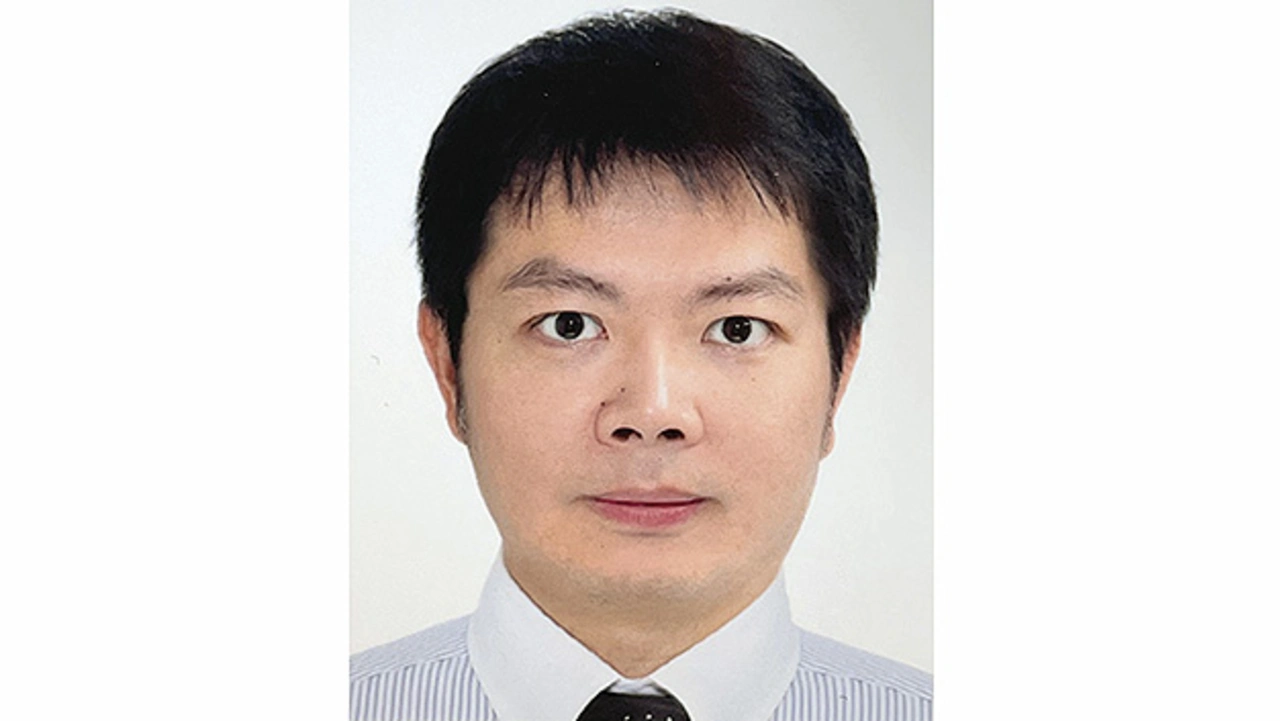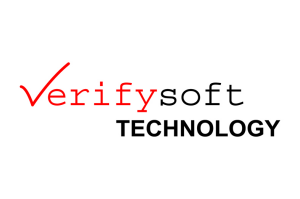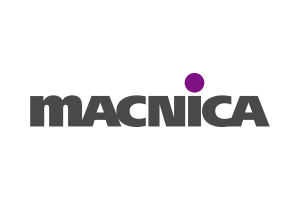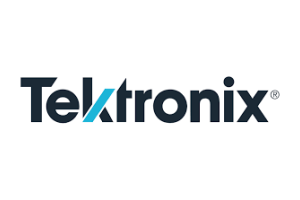GUC (Global Unichip Corporation)
ASIC design with direct access to TSMC
GUC is an ASIC design house for complex SoC and chiplets. Alex Huang, General Manager GUC Europe, Norbert Siedhoff, Representative of GUC, and Bastian Strassburg, Director Line Management & Marketing of Ineltek, are convinced that GUC offers customers advantages that no competitor can offer.
Markt & Technik: GUC is by no means the only company to offer ASIC design as a service. Nevertheless, you are convinced that GUC has advantages that no other provider can offer. What specific advantages do you see?

Alex Huang: GUC was founded in 1998 and is now truly global, we have branches in Japan, the USA, Vietnam, Europe and Korea. Our biggest shareholder is TSMC, the foundry has not invested in any other ASIC design company other than GUC. And that should make one of GUC's special features clear: We have closest relationship with TSMC, which owe around 35% of GUC shares. For example, our Chairman is Dr F.C. Tseng, who was the co-founder and vice CEO, and still today the board member of TSMC, and three of our board members are also VP level executives of TSMC. So if we want to address an issue, our Chairman will deliver it on to top TSMC executives directly. In addition, our close relationship with TSMC naturally gives us access to TSMC's state-of-the-art technologies. Accordingly, we can already demonstrate demonstrable success in 3, 5 and 7 nm and we are already working with 2 nm, which not many can do.

Norbert Siedhoff: I would also say that GUC is anything but just another ASIC/chiplet supplier. Their design activities are focussed on applications that require the highest computing power, best power efficiency and smallest integration footprint. GUC also differentiates itself with its unique Advanced Packaging Platform ATP, where discrete SoCs are integrated into a package, which in turn includes a wide range of IP cores, services and production capabilities from TSMC. GUC's ASICs/SoCs/chiplets represent the highest level of technology that truly no one else can offer.
Can you give us an overview of how GUC's sales are distributed across the various technology nodes?
Alex Huang: I think that around 60 per cent of our sales are generated with 16 nm and smaller structures, half of which are from designs with nodes from 6 nm and below. Since 2016, we have made more than 200 tape-outs, 120 of which are based on structures with 16 nm and below. If we only look at the new designs, 60 per cent of these designs are based on state-of-the-art process technologies.
One more point regarding your question about the advantages of GUC: We don't have our own brand name With other IDMs, this can sometimes become a problem for the customer, namely when the IDM wants to market the development under its own brand and also sell it to other customers. This is not the case with us; the customer receives their own ASIC.
Does GUC only use TSMC as a foundry?
Alex Huang: GUC itself can either access TSMC's process technologies or, when it comes to specialised processes such as BCD, SOI or HV, we use Vanguard International Semiconductor, or VIS for short. This company is also part of TSMC. The fact that we rely exclusively on TSMC and VIS simplifies development for us, as we work with the same tools for all designs.
Norbert Siedhoff: I would like to mention another point that is unique to GUC. The company is not just a design house, but accompanies the customer throughout the entire process, from specification to series production, including wafer production, testability, packaging, and GUC also takes care of qualification and logistics.
Alex Huang: We have development departments in Japan, the USA, China, Taiwan and South East Asia, but we don't yet have our own department in Europe, where we work together with partners.
Why does GUC not yet have its own development sites in Europe, is the market too small?
Alex Huang: A few years ago, European customers were not really at the centre of our interest. At that time, there were also few companies here that were interested in ICs based on state-of-the-art process technologies. This has now changed, partly because state institutions, especially the EU and the French government, are supporting this type of project with state funding. In addition, there are now also a number of start-ups in Europe that need state-of-the-art processes. Accordingly, GUC is now also focussing on the European market - also to see what opportunities there are for us here. We will therefore also establish development resources in Europe; we already have sales and project management in Amsterdam.
If you look at the various markets worldwide, in which is GUC most successful?
Alex Huang: I would say that there are two areas in which we are particularly successful. The first is the consumer segment. For example, we have developed a platform with Tier 1 SSD controller customers. Another application is on high end digital cameras, we work with all Japan Tier 1 companies, who all develop very professional and expensive cameras, and they all need state-of-the-art manufacturing technologies. I would categories the second segment more in the commercial or industrial sector. And here, for example, we are very successful with optical storage systems.
And what about the automotive segment?
Alex Huang: This application area is now also interesting for GUC. Although it typically takes a little longer for sales to start flowing here, we can now also tell a few success stories. Although these are still based on more mature process technologies, a change is taking place. We are increasingly discussing designs based on state-of-the-art process technologies with customers from the automotive industry. Even with microcontrollers, there is more and more talk about processes with structure sizes of 6 nm and below, although most microcontroller suppliers will probably stick with 16 nm processes for the time being.
Norbert Siedhoff: We recently visited a few customers in Europe, mainly from the automotive segment. And these visits confirm that the demand for computing power in applications such as ADAS, autonomous driving or infotainment has increased significantly. And this is precisely where complex SoCs are required, and in the longer term, of course, also chiplets.
State-of-the-art manufacturing processes have a decisive disadvantage: the costs are enormous, is there a rule of thumb in terms of unit quantities at which you would say an SoC is worthwhile or an SoC is not worthwhile?
Alex Huang: No, I don't think there is a rule of thumb for that, because clearly for cutting-edge process technologies, especially for anything 7nm and below, the unit price is very high. But even if you only make a few thousand pieces, if they are unique and they solve a problem, typically the revenue that the company can generate from those 1000 pieces is very good. Look at today's cutting-edge designs from companies like Nvidia and what they cost, so the profitability is there.
This answer is remarkable in that umpteen years ago many ASIC suppliers exited the market because most of their customers could no longer justify the upfront costs of state-of-the-art processes with corresponding quantities.
Alex Huang: It always depends on the specifications that are required. If, for example, it's a question of maximum computing power, then customers have many options from Nvidia or Qualcomm, for example. However, in many cases this can also represent overkill that developers don't want to pay for. Or the power consumption is far too high and then an ASIC can be the solution.
You mentioned partners in Europe, who can developers turn to if they want to use GUC's services?
Alex Huang: We work closely together with Ineltek, because for us as a company from Taiwan it is important that the cultural and business practices in the respective regions are known and taken into account. Conversations should take place in the local language and in the respective time zones, especially in Germany. And Ineltek enables us to do this, plus the fact that we also use their sales channels and that we have access to their customer base via Ineltek.
Norbert Siedhoff: That's exactly what GUC needs right now and that’s why they chosed Ineltek. They don't need external technical experts, they do it all themselves. GUC has technical support in Amsterdam. Ineltek provides GUC with the initial contact; when it comes to technical details, the GUC experts are called in.
And what is your role, Mr. Siedhoff?
Norbert Siedhoff: With my long years experience in Automotive, I am helping GUC and Ineltek within this market to identify and develop suitable business cases.
Are there any other market segments besides the automotive industry that GUC would like to address in Europe?
Bastian Strassburg: Ineltek has contacts in every market segment. And as Alex has already said, sales markets such as medical technology, storage or the computer segment are also very interesting for GUC. The latter may not be so big in Germany, but it is in Europe.
GUC has developed its own IP cores, is this another mainstay of the company, for example by licensing its IP cores to customers?
Alex Huang: We have developed a few high-speed IP cores in the connectivity area ourselves, as well as HBM IPs, HBM PHYs and controller IPs, which we use ourselves, but customers can also use these cores.
Last question: GUC is focussed on high-performance applications, which IPs do you rely on in the processor area?
Alex Huang: We typically work with ARM cores, but also with RISC-V, depending on what the customer needs.
The interview was conducted by Iris Stroh





